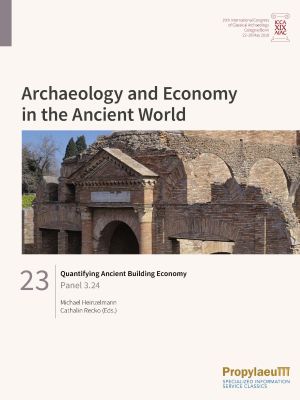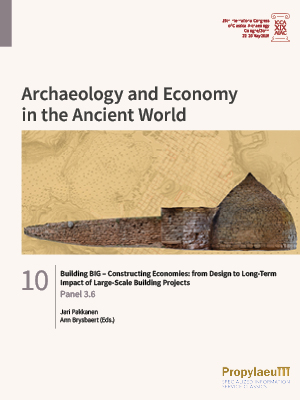Russell, Ben
Quantifying Ancient Building Economy: Panel 3.24
In recent years, the study of ancient construction has focused increasingly on putting the different aspects of the process of building into an economic framework. This entailed examining the various steps of construction and the organization of a building site in detail. It also meant that attempts were made to quantify the use of both the materials and the labour necessary for the building project, as these illustrate the scale of a building project and its impact on the overall economy.
The goal of this volume is to bring together different approaches of the study of the economy of building. With the help of methods of quantification and intensive architectural studies, the case studies of city walls, baths, temples and timber buildings in this volume not only shed light on the various constructional characteristics of these buildings, but also on a wide range of economic implications. The collection of papers ranges from Messene in the 4th century BC to Imperial Rome and are completed by practical insights from 19th century building manuals.
Building BIG – Constructing Economies: from Design to Long-Term Impact of Large-Scale Building Projects: Panel 3.6
This volume contains various studies that range from prehistoric Greek building programmes to building in the Roman period. The economic growth of modern societies has been closely linked with construction industries: investments, transport infrastructures for materials and labour-intensive building programmes all have a large impact on local, regional and even global economies. The end results have shaped the built environment of our everyday lives and have often led to an increased quality of life and affluence, though there are many cases that did the opposite as well. Large-scale building projects in pre-industrial societies required extensive manual labour to be invested from the moment materials were scouted for, over the extraction, transportation, use and the subsequent maintenance. Since most ancient societies were based on subsistence economies, important decision-making was a daily balancing act between building work and agriculture. These decisions often strongly influenced the patterns of land use and may have also resulted in circular economic strategies. The papers presented in this volume emphasise the importance of the socio-economic and political structures and decision-making that resulted in ‘Building Big’, irrespective of the shape and final size of the projects.








